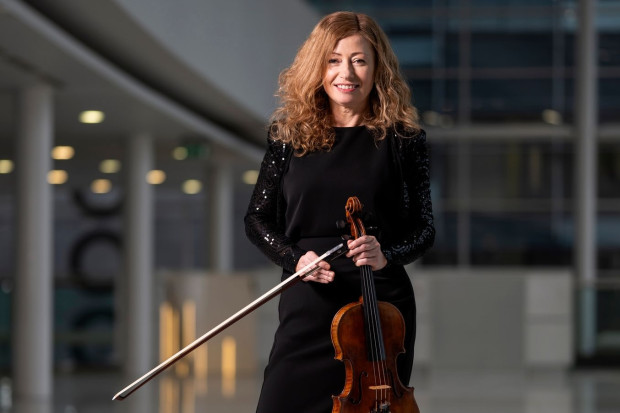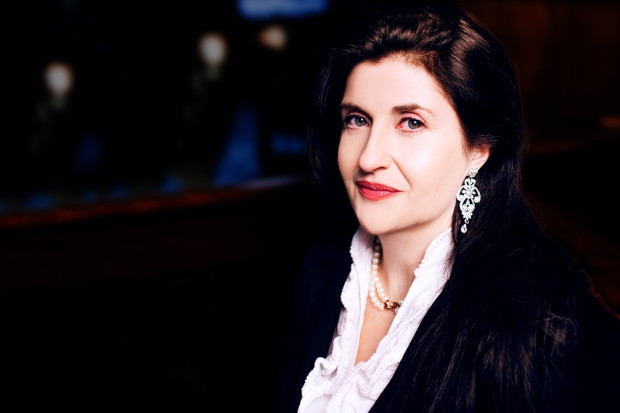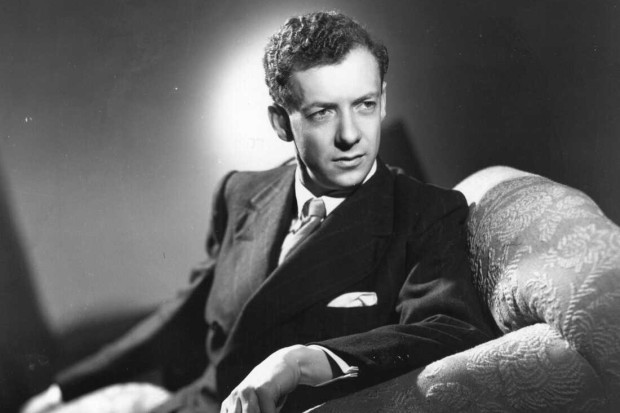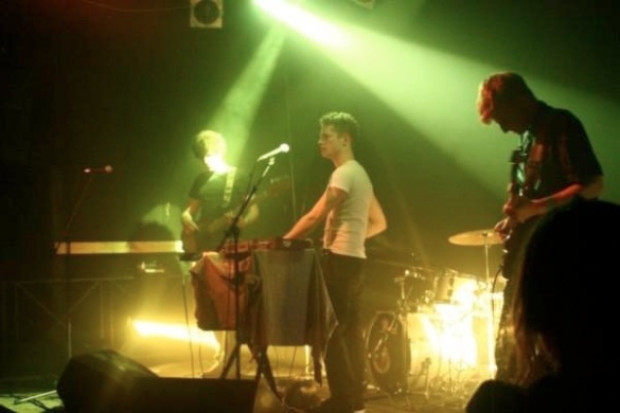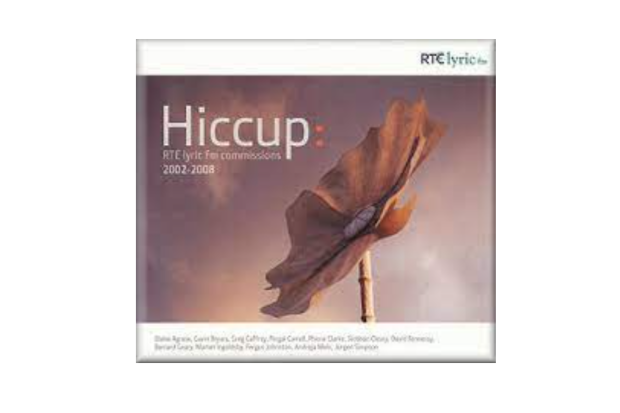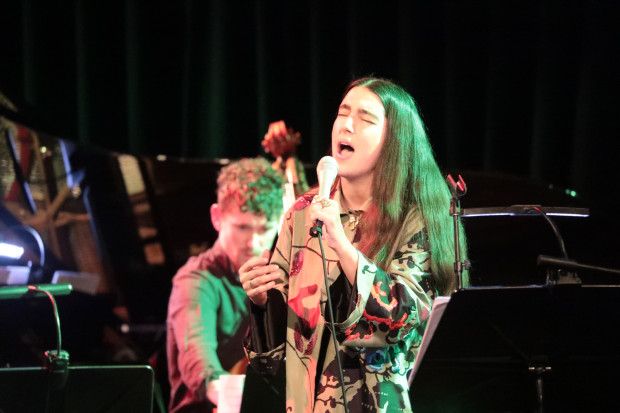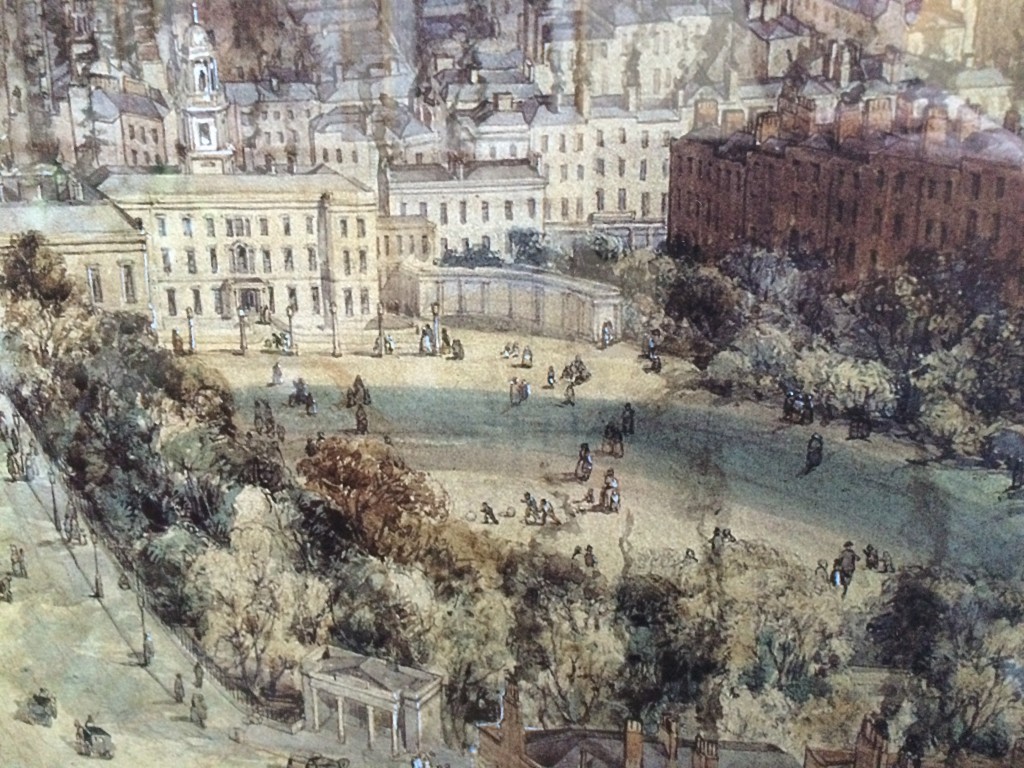
Music in 17th and 18th Century Dublin: Part 2
Music publishing began in Ireland, it seems, in 1686 with one Robert Thornton at the Sign of the Leather Bottle in Skinners Row. Skinners Row was roughly where Christ Church Place is now. Incidentally, Skinners Row, Dame Street and College Green had a considerable concentration of booksellers and publishers (among whose number was a Gunn!), possibly thirty-five or so, around 1730, an extraordinary number for a city the size of Dublin at the time. Music publishing and indeed general publishing in Dublin benefited from the absence of any copyright laws, and pirated editions of works (including music) first published in London were commonplace.
An interesting publication from the late seventeenth century is entitled Of Gifts and Offices in the Publick Worship of God. A treatise in three parts by Edward Wetenhall DD and was published in 1678 by Benjamin Tooke in Skinners Row, Dublin. Wetenhall was Chanter (Precentor) of Christ Church Cathedral and Precentor of St Patrick’s at the time. At first glance this might not be of direct interest to us here, but in fact the second part is entitled Of the Gifts and Duty of Singing to God and is a critical examination and discussion of musical practices in cathedral choirs. It covers much ground and is even very amusing in places, as for example his observations on the use of metrical versions of the Psalms. In a section which has distinct echoes of the findings in 1562 of the Council of Trent (the performance of music in the Mass ‘should be constituted not to give empty pleasure to the ear but … that the words may be understood by all, and thus the hearts of the listeners be drawn to the desire of heavenly harmonies, in the contemplation of the joys of the blessed’)[1] and before that in 1544 of Archbishop Cranmer in England (‘… not full of notes, but, as near as may be, to every syllable a note; so that it may be sung distinctly and devoutly’)[2] he says:
… we have in several of those new pieces strangely needless and nauseous, not to say senseless, repetitions; on such words and clauses I mean, on which no Emphasis lies fit to detain thought, or exercise devotion. If any word consists of consonant and voluble syllables, fitter than others to bear any sequel of Notes, which the musician fancies, it shall be dallied with, and tost as a feather in the air, for no other reason but because the Artist would shew his skill thereby, and tickle the ears and fancies of vainer mindes …
Another quote will give a further flavour of his style and approach. It contains a warning which (although he does seem to get carried away a little in his fervour!) might be apposite even today:
… I do not know, whether there be some little fate, or secret fascination, in the case, that those, who intimately study and understand musick, without great importunity, never give themselves to the study of anything else, and admire no excellencies so much as, those of their own art. I confess myself to admire Musick, as much, I think as any other man ought to do: but notwithstanding all the value I have for it, I cannot think that this alone is a sufficient accomplishment for a rational creature, [!] or ought to be made, as it were, the whole business of a man’s life …
Outside the perhaps rarefied atmosphere of the Cathedrals the commerce of music continued: two very important figures being John and William Neale (father and son respectively) who were active from the early 1720s as importers and makers of musical instruments and of music. They were the first in Ireland to publish any substantial amount of music. It was William who was responsible for the building of the Musick Hall in Fishamble Street. This was completed at the end of September 1741, just in time for Handel’s visit to Dublin. It was there that Messiah would receive its first performance the following year. Its front wall is still standing. It is at the upper end of Fishamble Street, just around the corner from Christ Church Cathedral next to the new premises of the Contemporary Music Centre. Handel was well pleased with the Musick Hall for he wrote to Charles Jennens, in a letter which gives an inkling of the high standard of performance in Dublin at the time:
Signora Avolio which I brought with me, pleases extraordinary. I have another tenor voice which gives great satisfaction, the Basses and Counter-Tenors are very good, and the rest of the Chorus singers (by my direction) do exceedingly well. As for the Instruments they are really excellent, Mr. Dubourg being at the Head of them and the music sounds delightful in this charming room, which puts me in such spirits (and my health being so good) that I exert myself on my Organ with more than usual success.[3]
He obviously thoroughly enjoyed his visit to Ireland for he continues:
I cannot sufficiently express the kind treatment I receive Here, but the Politeness of this generous nation cannot be unknown to you, so I let you judge the satisfaction I enjoy, passing my time with honour, profit and pleasure.[4]
During the first half of the eighteenth century, most operatic performances took place at the theatres in Smock Alley, in Aungier Street, and at the Crow Street Music Hall. Later in the century other venues came into prominence, such as the Capel Street Theatre, Ranelagh House and Gardens and the Rotunda. For these performances some of the leading singers and instrumentalists of the day considered it worth their while to spend, often long, periods of residence in Dublin.
Musical instrument making took place on a wide scale in Ireland during the seventeenth and eighteenth centuries, and several of the makers attained a very high standard. Particular mention must be made of the violin makers James and Thomas Perry whose instruments are valued highly now. Another important figure was Ferdinand Weber who was an organ and harpsichord maker. He regularly travelled throughout the country, tuning and maintaining organs. There are some instruments by him in the National Museum, and a fine harpsichord of his was put into playing order and used during the celebration of the two hundredth anniversary of the death of J. S. Bach, in 1950. It was played at that time, if I recollect correctly, by John Beckett. Since when, it must be said sadly, the instrument has languished in the museum – virtually unplayed, unheard and in recent times for many years unseen. During the second half of the eighteenth century the piano began slowly to supplant the harpsichord throughout Europe and Dublin seems to have been well to the forefront in its eagerness to adopt the new instrument. There were several other makers at work, foremost amongst these being perhaps William Southwell, who made many wonderful pianos. He had been apprenticed to Ferdinand Weber and both men had their workshops on Marlborough Street.[5] They both seem to have moved about a certain amount for at different times they had different addresses on the street.[6] Southwell moved to London where he was settled by 1794 but maintained a workshop in Dublin presumably overseen by his son. He seems to have made a fair number of small pianos in semi-circular form – beautiful instruments with exquisite Mother of Pearl inlay, a couple of which have appeared in recent years at the London auction rooms where they have fetched exceedingly high prices! William Southwell was also an important innovator in the development of the piano’s mechanism with several important patents to his credit.[7] He made harpsichords also and there is a very fine example of an upright harpsichord by him in the National Museum as well as one of the aforementioned semicircular pianos.
I have made reference to John and William Neale as music publishers, musical instrument makers and impresarios. As the eighteenth century developed, so did music publishing, and there were many music publishers active during the second half of the century, most notable amongst these were the Lee family: Samuel, Edmund, John and Anne. Interestingly Anne Lee was not the only woman publisher in Dublin at the time, E(lizabeth?) Rhames, at 16 Exchange Street was another.
The music publishers of Dublin, besides making a killing, as I’ve mentioned above, in publishing pirated editions of works already published in London and flooding the English market with these at a fraction of the cost of the original editions, also provided an outlet of sorts for Irish composers of the period. Whether the composers in question got much in the way of financial return for their work is debatable.
Richard Woodward, born in Dublin in 1744, just three years before the death of Ralph Roseingrave,[8] was the son of one of the Lay Vicars Choral, of the same name, at the Cathedrals. Richard junior was obviously a remarkably talented musician for he was appointed as Organist of Christ Church at the early age of 21, in 1765, and Master of the choristers at both cathedrals, and he became a Vicar Choral at St Patrick’s in 1772. He died at the age of 33, in 1777. He entered Trinity College Dublin when the Earl Of Mornington was Professor of Music, and he was awarded the degree of Doctor of Music at the age of 28. Four year previously he had dedicated his Opus 1 to Mornington; this was his Collection Songs, Canons and Catches for 1, 2, 3, 4, 6 and 8 Voices which was published in London. Next came a setting of ‘Veni Creator Spiritus’ (in English), composed for the consecration of the Bishop of Cloyne. Finally his third and last publication came in 1771 and the most substantial of the three. It was his Cathedral Music and it contains a number of anthems and other items, for various combinations of solo voices and chorus, with an important organ part in many of them. His three published works contain only vocal or choral music. To my knowledge there is no purely instrumental music by him extant. It is hard to believe, on an examination of the music by him available to us, that he wrote no keyboard music. Some of the anthems in his cathedral music contain quite advanced keyboard writing. His canons seem to have been popular with the catch clubs of the time, and he was awarded prizes by some of these. For example he was awarded the prize medal by the Noblemen and Gentlemen of the Catch Club, Pall Mall London 1767, for one canon and for another the first prize medal given by the Noblemen and Gentlemen of the Catch Club held at Almack’s Tavern, London 1764.[9]
A study of the music in his collection of cathedral music leaves one with the impression that the choirs which performed this music must have been very good indeed, and there seems little doubt that Woodward was an exceptional choir trainer. When he died his father had a monument erected to his memory in Christ Church Cathedral. It is still in the Cathedral and has one of his canons inscribed on it.
Richard Woodward provides us with a link to Trinity College, Dublin, and to the first professor of music there. Garrett Colley Wellesley was born at Dangan Castle, County Meath, in 1735. He was the son of the first Baron Mornington and became the second Baron Mornington on his father’s death, becoming in due course The Earl of Mornington. He was a godson of Mrs Delany’s and as a child was extremely precocious – and not just as a musician. According to Mrs Delany, writing in a letter on 15th August 1748:
He was thirteen last month, he is a very good scholar and whatever study he undertakes he masters it most surprisingly. He began with the fiddle last year, he now plays every thing at sight; he understands fortification, building of ships and has more knowledge than I ever met with in one so young.[10]
Dr Wetenhall would certainly have approved! Mornington also played the organ and harpsichord. He was self taught as a composer and it was said, I don’t know on what authority, that when he approached Francesco Geminiani and Thomas Roseingrave for lessons they told him that he already knew all that they could teach him. Now it has never been too clear to me that they said this because it was true or because he was the Earl of Mornington! He had received a BA in 1754 and an MA in 1757. In that year he founded the Academy of Music in which women sang in the chorus for the first time. In 1764 Dublin University conferred him with the degree of Doctor of Music and he was appointed Professor of Music there the same year. He held this post until 1774 and when he resigned it lapsed, not to be revived until the nineteenth century. The Duke of Wellington was the most prominent of his sons. Mornington’s compositions are nearly all vocal, in fact there is only one completely instrumental work by him extant. This is a march composed for the installation of the Duke of Bedford as Chancellor of Dublin University in 1768. It received what was probably its first performance in modern times at my wedding on 18th June 1962 (the anniversary of the Battle of Waterloo) in an organ transcription which I made.[11]
There is a cantata by Mornington in the manuscript collection in Trinity College, which was his exercise for the Degree of Doctor of Music. If he is remembered at all today it is as a composer of glees at which he excelled. Perhaps his best known work is the glee ‘Here in cool Grot’. This was published in Dublin by Samuel Lee. Another fine piece is his ‘Come Shepherds, come’ which he described as a madrigal in ‘imitation of Mathew Locke’.
Another Irish composer was Philip Cogan, arguably the most important composer working in Dublin at the close of the eighteenth century. Perhaps Richard Woodward, had he lived long enough, would have outshone him. The same might also be said of Thomas Augustine Geary (Timothy Geary), perhaps with greater force, but he also died (in a drowning accident) at the very early age of 28 in 1801. Geary had no connection with either of the Cathedrals. Who knows what the course of Irish musical history might have been had these two lived. Cogan was born in Cork in 1748 and was a chorister in St Finbarre’s Cathedral there under William Smith. Later he became an adult member of that choir before deciding to go to Dublin in 1772. He was appointed as a stipendiary in the choir of Christ Church on his arrival in Dublin. It seems he didn’t stay long in the post soon resigning to become organist of John’s Church in 1778. Two years later, on 14th November 1780, he was appointed organist of St Patrick’s Cathedral. Fifteen years after that he was threatened with suspension for neglecting his duties. The threat must have had the desired effect, for he continued in the position for another fifteen years, resigning in 1810 at the age of 62 to devote the final twenty-three years of his life to teaching and composition. He had a very good reputation as a teacher and numbered among his pupils were Michael Rooke the composer, the tenor, Michael Kelly, and poet, Thomas Moore. Kelly, in his reminiscences published in London in 1826, speaks highly of Cogan:
His execution on that instrument [the pianoforte] was astonishing and his compositions, although not generally known in this country possess great merit.
And in a footnote Kelly adds:
Doctor Cogan[12] is still living in Dublin; he has good health and independence, and is an hospitable worthy fellow, highly esteemed by all his connexions.
Besides being a notable performer on pianoforte, harpsichord and organ, and a busy teacher, Philip Cogan also managed to be a prolific composer. His published output runs to two piano concertos, something like twenty piano sonatas, five sonatas for violin and piano, some separate piano pieces (variations, rondos and the like) and a number of songs, including one for voice, two violins and figured bass. Most of his works are extant but some of the piano sonatas seem to have been lost. Besides these published works, there is some church music in the manuscript music library of Christ Church Cathedral to which I referred in part one of this article.
I have had to omit reference to many things due to considerations of space: people such as Sir John Stevenson – singer, Vicar Choral in the cathedrals and a prolific composer (and Thomas Moore’s arranger of the music in the Irish Melodies), whose knighthood caused some jealousy and which produced the following couplet: ‘We’ve all of us heard of a Knight in the Shire, But who ever heard of a Knight in the Choir?’! Needless to say it did the rounds at the time in Dublin musical circles. I barely touched on Timothy Geary and I didn’t even mention Rev. Robert Shenton, a clerical Vicar Choral at Christ Church who appears to have been a quite gifted, if uneven, composer. One of his best works is the fine verse anthem, ‘The Beauty of Israel is Slain’. This appeared in a recent scholarly edition which was unfortunately marred by a glaring error, in which, for 24 bars, spread over a total of 41 bars, the counter-tenor part is given an octave too high! I wrote not a word about Carolan even though it is probable that he would have visited Dublin, several times. On one such visit he seems to have met with a very famous personality to whom I also made no reference whatsoever: Jonathan Swift was that most unmusical Dean of St Patrick’s (Grave Dean of St Patrick’s how comes it to pass / That you who know Music no more than an ass, / That you who so lately was writing of Drapiers, / Should lend your Cathedral to players and scrapers?) who nonetheless looked after his choir most assiduously. Nor did I mention Rev. John Echlin (described as Swift’s musical adviser) who set to music the words of Swift’s hilarious, so called, Cantata.[13] I hope, that by referring to some of these my omissions, as much as by what I have included, I have given the reader an insight into the rich diversity of musical activity and ferment of creative energy that was musical life in seventeenth and eighteenth-century Dublin.
Some of the music mentioned in part 1 and part 2 of this article is available from Douglas Gunn’s newly established music publishing company, Melrose Music MM, or will be published by them in the future. Visit their website at www.melrosemusic.ie. E-mail dg [at] melrosemusic.ie or phone (021)4646399 for a catalogue.
Notes
1. Quoted in Music in the Renaissance, Gustave Reese. New York, 1959
2. Quoted in English Cathedral Music (4th Edition), Edmund H, Fellowes. London, 1948
3. Letter to Jennens 29th December 1741 Quoted (p.70) in Handel, Percy Young, London, 1947
4. Ibid.
5. ‘A List of Irish Instrument Makers’, John Teahan, Galpin Society Journal XVI, May 1963
6. Ibid.
7. The Piano-Forte (2nd Edition), R.E.M. Harding, London, 1978
8. Cathedral Organists (2nd Edition), John E. West, London, 1921
9. This Canon ‘O almighty Lord’ is published by Melrose Music MM
10. Letters from Georgian Ireland: The correspondence of Mary Delany 1731-68, Edited by Angélique Day Belfast 1991. See also Autobiography and correspondence of Mary Granville (Mrs. Delany) vols i - vi, by Lady Llanover, London 1861 - 62.
11. The organist on that occasion was Rev. John Patterson, now the Very Rev. Dean of Christ Church. The March has received many performances since then by the Douglas Gunn Ensemble (D.G.E.) with recorders, cello and harpsichord. It is published by Melrose Music MM.
12. The styling of Cogan as Dr Cogan seems to be spurious: the late Brian Boydell told me that he could find no record in TCD to confirm it.
13. The Cantata (‘In Harmony would you excel, / Suit your words to the music well’) has been broadcast, and performed many times over the years by the D.G.E.
Published on 1 March 2003
Douglas Gunn specialises in early music and is perhaps best known for his work with the Douglas Gunn Ensemble. He has made a special study of music by Irish composers of the 17th and 18th centuries and has arranged, performed and recorded much of Carolan's music. He is also a composer.












